
Hypothermia Symptoms Hiking: Complete Guide to Recognition, Prevention & Treatment
After nearly two decades of hiking in challenging conditions across North America, I've witnessed firsthand how quickly hypothermia symptoms hiking situations can escalate from minor discomfort to life-threatening emergencies. This comprehensive guide combines my personal experiences with expert medical knowledge to help you recognize, prevent, and treat hypothermia during your outdoor adventures. From the essential gear you need to real-world scenarios I've encountered, you'll discover everything necessary to stay safe on the trails.
Understanding Hypothermia in Hiking Context
Hypothermia symptoms hiking incidents represent one of the most underestimated dangers in outdoor recreation. Unlike dramatic mountain accidents that make headlines, hypothermia silently creeps up on hikers, often in seemingly mild conditions. I've encountered this threat multiple times during my hiking career, from unexpected weather changes in the Cascade Mountains to extended exposure during rescue operations in the Rockies.
What many hikers don't realize is that hypothermia can occur in temperatures as warm as 50°F (10°C), especially when combined with wind and moisture. The human body normally maintains a core temperature around 98.6°F (37°C), but when this drops below 95°F (35°C), hypothermia begins. During hiking, your body generates heat through movement, but various factors can overwhelm this natural warming mechanism.
The hiking context adds unique challenges to hypothermia prevention. Unlike controlled environments, trails expose us to rapidly changing conditions, physical exhaustion, and limited shelter options. I've learned that recognizing hypothermia symptoms hiking situations requires understanding how outdoor stressors compound the risk. Factors like dehydration, inadequate nutrition, wet clothing, and fatigue create a perfect storm for heat loss.
During a memorable October trek in Washington State, I witnessed a experienced hiker develop mild hypothermia despite wearing what appeared to be adequate gear. The combination of light rain, steady wind, and cotton base layers created conditions where his body couldn't maintain core temperature. This experience taught me that understanding the science behind heat loss is crucial for every outdoor enthusiast.
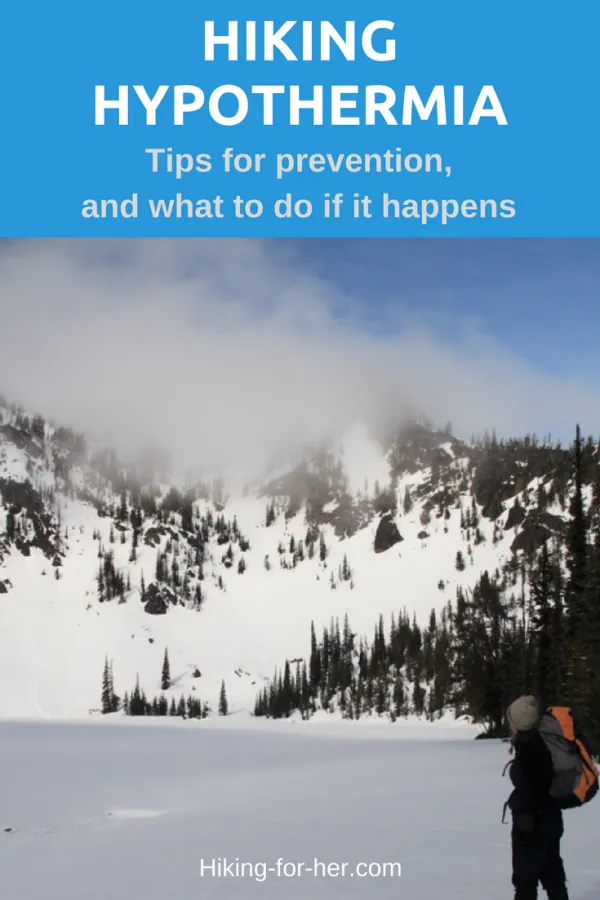
Essential hypothermia awareness for hiking safety
Key Risk Factors in Hiking Environments
- Wind chill effects that increase heat loss exponentially
- Wet conditions from rain, snow, or stream crossings
- Physical exhaustion reducing the body's heat production
- Inadequate caloric intake during extended hikes
- Poor gear choices, especially cotton clothing
The progression from comfort to danger happens faster than most hikers expect. Your body's initial response involves vasoconstriction, redirecting blood flow from extremities to protect vital organs. This survival mechanism explains why fingers and toes feel cold first. Understanding this physiological response helps explain why early intervention is so critical in hypothermia symptoms hiking situations.
Through years of guiding and wilderness medicine training, I've learned that prevention starts with respecting the environment's power to overwhelm human thermoregulation. The mountains don't care about your hiking experience or fitness level – they demand preparation, awareness, and quick decision-making when conditions deteriorate. For comprehensive wilderness safety, understanding bear safety tips hiking alongside hypothermia prevention creates a well-rounded safety approach.
Recognizing Hypothermia Symptoms While Hiking
Recognizing hypothermia symptoms hiking scenarios requires vigilance and knowledge of both obvious and subtle warning signs. During my two decades on the trails, I've learned that the most dangerous aspect of hypothermia is how it impairs the victim's judgment, making self-recognition nearly impossible. This is why hiking partners must stay alert to changes in each other's behavior and physical condition.
Mild Hypothermia Symptoms (90-95°F)
- Intense shivering (body's attempt to generate heat)
- Loss of fine motor control in hands
- Fatigue and decreased energy levels
- Increased urination frequency
- Mild confusion or poor decision-making
- Difficulty performing simple tasks
Severe Hypothermia Symptoms (Below 90°F)
- Shivering stops (extremely dangerous sign)
- Severe confusion and irrational behavior
- Muscle rigidity and coordination loss
- Slurred speech or inability to speak
- Shallow, slow breathing
- Weak pulse and loss of consciousness
The "Umbles" - Easy Memory Tool
Wilderness medical professionals teach the "umbles" as a simple way to remember key hypothermia symptoms hiking warning signs:
- Stumbles - Loss of coordination and balance
- Mumbles - Slurred or incoherent speech
- Fumbles - Inability to use hands effectively
- Grumbles - Personality changes and irritability
I remember a particular incident on Mount Rainier where my hiking partner began exhibiting subtle personality changes – becoming unusually quiet and making poor decisions about route finding. Initially, I attributed this to fatigue, but when I noticed his fumbling with simple gear adjustments, I recognized the early stages of hypothermia. This experience reinforced how hypothermia symptoms hiking situations can develop gradually and require constant vigilance.
One of the most insidious aspects of hypothermia is paradoxical undressing, a phenomenon I witnessed during a rescue operation in Colorado. A severely hypothermic hiker had removed his jacket and gloves despite sub-freezing temperatures. This occurs when the brain, confused by the cold, misinterprets signals and feels overheated. Understanding this counterintuitive behavior can prevent rescuers from dismissing someone as intoxicated or mentally unstable.
The progression from mild to severe hypothermia can happen rapidly, especially in wet conditions. Wind chill significantly accelerates this process – I've seen hikers go from mild symptoms to serious distress in under an hour when exposed to cold rain and wind. This is why recognizing early symptoms and taking immediate action is crucial for preventing a medical emergency from becoming a fatality.
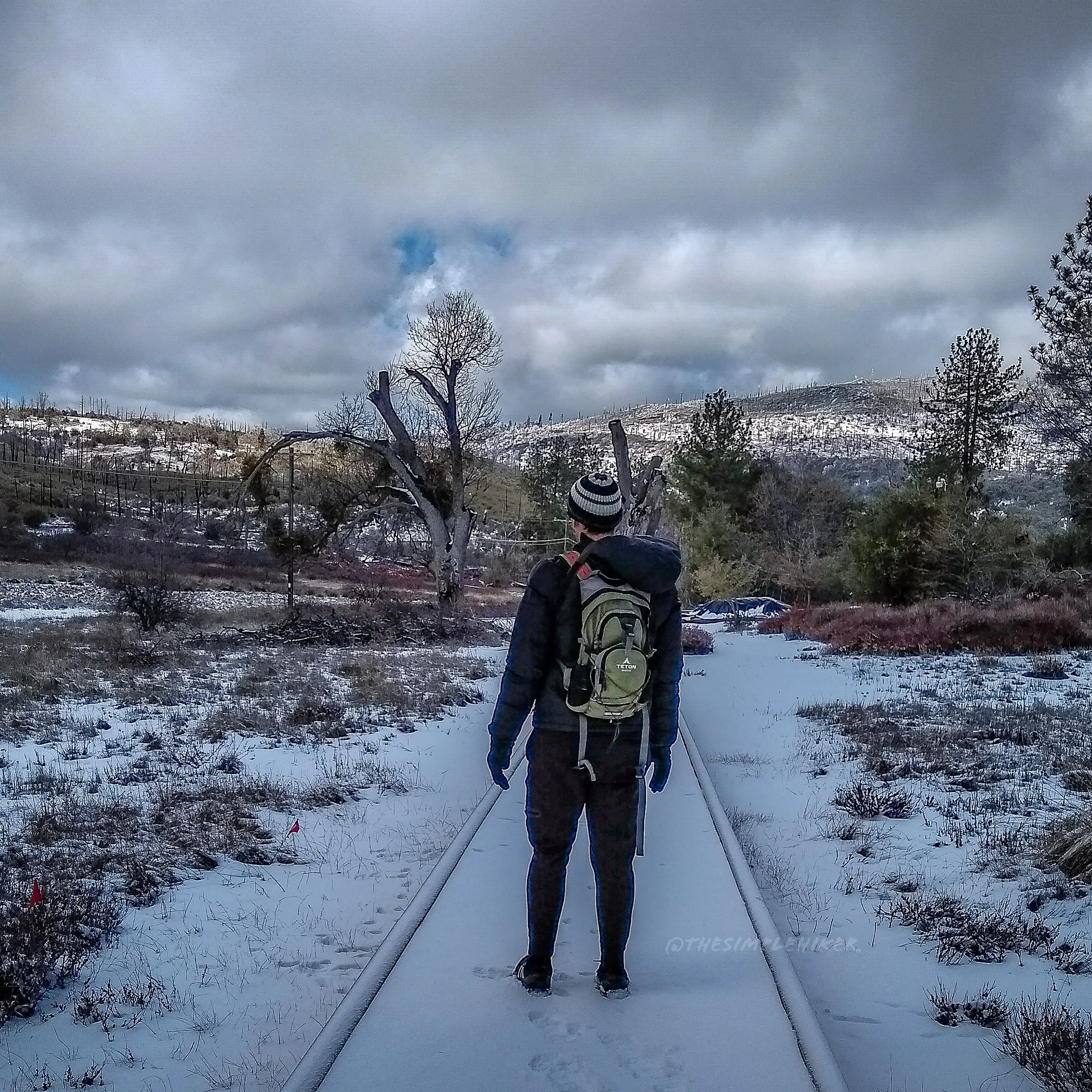
Proper layering prevents hypothermia development
Field testing for hypothermia includes simple coordination checks. Ask the person to walk a straight line heel-to-toe, like a sobriety test. Inability to perform this task indicates significant impairment. Similarly, have them touch their nose with their index finger or perform simple math calculations. These tests help distinguish between fatigue and actual hypothermia, crucial for determining appropriate response measures. For hikers concerned about other trail dangers, learning about snake awareness trails provides additional safety knowledge.
Prevention awareness becomes critical when considering that hypothermia victims often resist help, insisting they feel fine. I've encountered hikers who were clearly hypothermic but argued against putting on additional layers or seeking shelter. This resistance stems from the cognitive impairment that accompanies dropping core temperature. Having a clear action plan and the authority to make decisions for the group becomes essential in hypothermia symptoms hiking emergencies.
Prevention Strategies for Hikers
Preventing hypothermia symptoms hiking emergencies requires a comprehensive approach that begins long before you hit the trail. Through years of wilderness experience and formal wilderness medicine training, I've developed a systematic prevention strategy that has kept me and my hiking partners safe in challenging conditions. The key lies in understanding that hypothermia prevention is an active, ongoing process throughout your hike.
Pre-Trip Planning
- Check detailed weather forecasts and altitude-specific conditions
- Research trail exposure levels and shelter availability
- Plan turnaround times with weather buffer
- Inform others of your route and expected return
- Pack extra food and emergency shelter
Clothing Strategy
- Use moisture-wicking base layers (never cotton)
- Carry insulating mid-layers (fleece or down)
- Pack waterproof outer shell
- Bring extra hat and gloves
- Include emergency insulation layer
The layering system forms the foundation of hypothermia prevention. I learned this lesson dramatically during an early spring hike in the White Mountains when a sudden storm caught our group unprepared. Those wearing cotton base layers became hypothermic within hours, while those in synthetic or merino wool layers stayed warm despite being equally wet. This experience taught me that fabric choice can literally mean the difference between life and death.
Nutrition and Hydration Protocol
Maintaining proper fuel for your body's heating system prevents hypothermia symptoms hiking development:
- Eat high-calorie snacks every hour during cold weather hiking
- Focus on fats and complex carbohydrates for sustained energy
- Drink warm fluids when possible (thermos with hot tea/cocoa)
- Avoid alcohol, which impairs judgment and increases heat loss
- Monitor hydration status – dehydration impairs thermoregulation
Activity management plays a crucial role in prevention. I've learned to pace groups differently in cold conditions, taking shorter but more frequent breaks and ensuring everyone stays adequately fed and hydrated. When temperatures drop or conditions deteriorate, I implement the "20-minute rule" – checking in with each team member every 20 minutes to assess their condition and make gear adjustments as needed.
Environmental awareness extends beyond just watching the thermometer. Wind chill calculations, precipitation type, and terrain exposure all factor into risk assessment. I carry a wind meter and thermometer to make objective decisions rather than relying on subjective comfort levels. Understanding how different environmental factors combine to create hypothermia risk has prevented numerous potential emergencies during my guiding career.
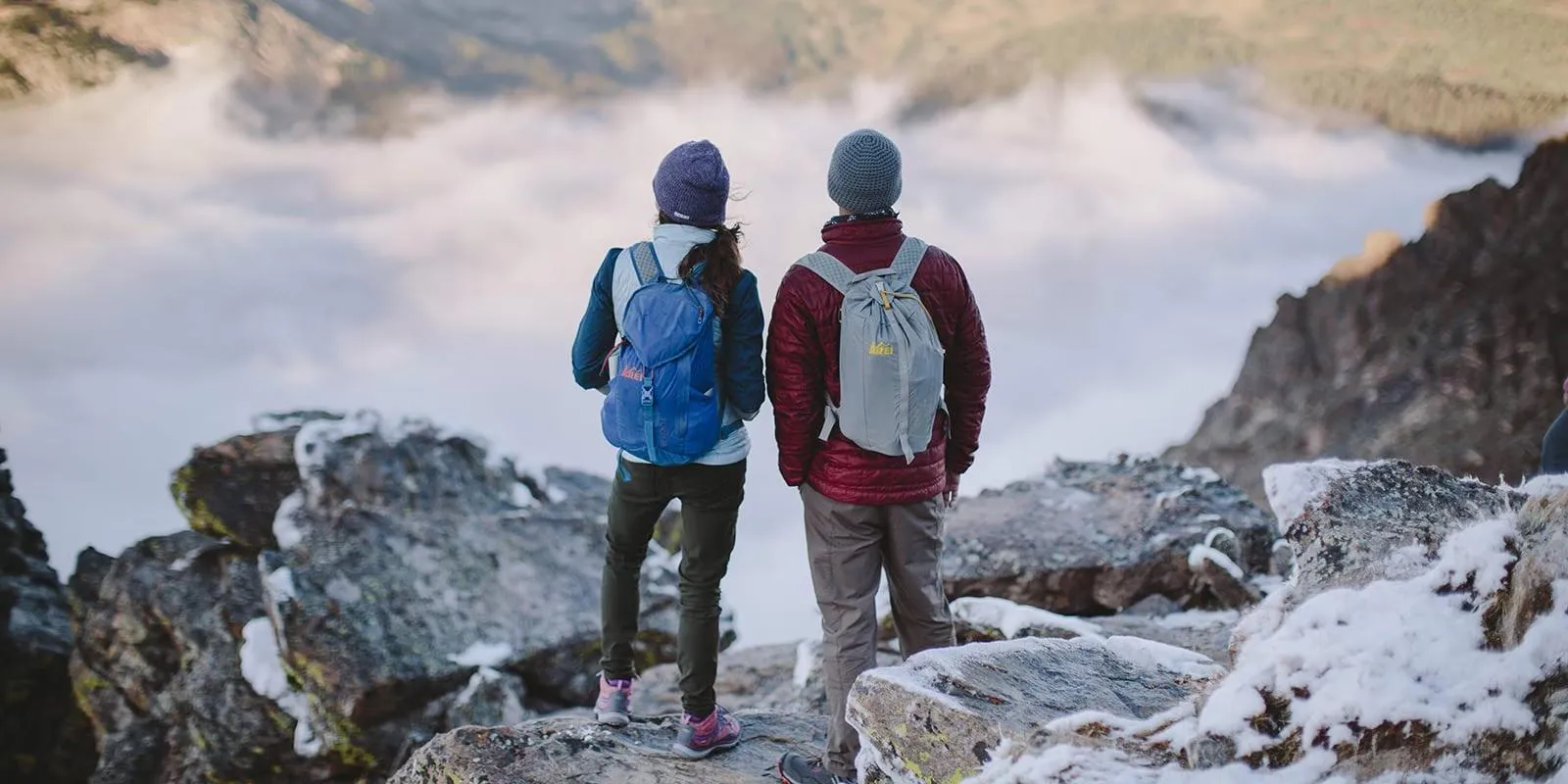
Proper technique prevents heat loss
Group dynamics significantly impact hypothermia prevention. Establishing clear communication protocols ensures everyone feels comfortable reporting discomfort or symptoms. I've seen situations where hikers suffered in silence, not wanting to slow down the group, ultimately creating dangerous scenarios. Creating a team culture where safety concerns are welcomed and acted upon immediately is essential for preventing hypothermia symptoms hiking emergencies.
Technology can enhance prevention efforts. Weather apps with hourly forecasts, GPS devices for route modifications, and emergency communication tools provide valuable safety margins. However, I always emphasize that technology should supplement, not replace, traditional navigation skills and environmental awareness. During a memorable winter hike in Glacier National Park, our GPS batteries died in extreme cold, but traditional map and compass skills combined with environmental awareness kept us safe when conditions suddenly deteriorated. Understanding other risks like insect bite prevention hiking helps round out comprehensive trail safety knowledge.
Emergency Treatment in the Field
When prevention fails and you encounter hypothermia symptoms hiking situations, immediate and appropriate treatment can save lives. My wilderness medicine training and real-world experience have taught me that field treatment requires quick assessment, decisive action, and sometimes difficult decisions about evacuation versus on-site treatment. The key principle is preventing further heat loss while carefully rewarming the victim.
Critical First Response Steps
- Stop further heat loss: Get the victim out of wind and precipitation immediately
- Handle gently: Rough movement can trigger dangerous heart rhythms in severe cases
- Remove wet clothing: Cut if necessary to avoid excessive movement
- Insulate from ground: Use sleeping pads, packs, or any available barrier
- Begin rewarming: Focus on core areas (chest, neck, groin)
Mild Hypothermia Treatment
- Encourage light exercise if coordination allows
- Provide warm, sweet drinks (no alcohol or caffeine)
- Add dry insulation layers
- Seek immediate shelter
- Monitor closely for improvement or deterioration
- Plan for evacuation if no improvement
Severe Hypothermia Treatment
- Minimize movement - carry victim if possible
- No food or drink for unconscious victims
- Passive rewarming only (no hot water bottles)
- Share body heat in sleeping bag
- Monitor breathing and pulse carefully
- Immediate evacuation required
I'll never forget treating a severely hypothermic hiker on Mount Washington. She had stopped shivering and was becoming increasingly confused, clear signs of advanced hypothermia. Our team immediately established shelter using emergency tarps, removed her wet clothing, and began passive rewarming with dry sleeping bags and body heat. The critical factor was recognizing that active rewarming (hot drinks, heating pads) could be dangerous for severe cases, potentially causing dangerous blood flow changes.
Body Heat Sharing Technique
Skin-to-skin contact in a sleeping bag is often the most effective field rewarming method for hypothermia symptoms hiking emergencies:
- Remove clothing from both victim and rescuer
- Place victim in dry sleeping bag with warm rescuer
- Focus contact on core areas (chest to chest, back to chest)
- Ensure both are dry and insulated from ground
- Continue until professional help arrives or evacuation possible
Evacuation decisions require careful judgment. Mild hypothermia cases may recover with field treatment and allow continued hiking with close monitoring. However, severe cases require immediate evacuation, even if it means initiating rescue operations in challenging conditions. I carry emergency communication devices specifically for these scenarios, having used them twice during hypothermia emergencies when immediate evacuation was necessary.
Prevention of further complications during treatment is crucial. Hypothermic patients are at risk for cardiac arrest, especially during rewarming. I monitor pulse and breathing continuously, positioning the victim to maintain open airways. During one rescue operation in the Tetons, we had to perform CPR on a hypothermic climber, demonstrating why wilderness first aid training is essential for serious hikers.
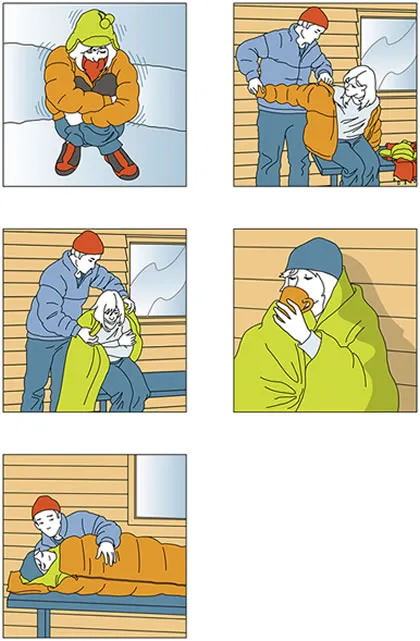
Field treatment protocol steps
Documentation during treatment helps medical professionals continue care. I record initial symptoms, treatment provided, response to intervention, and ongoing vital signs when possible. This information proves invaluable when transferring care to paramedics or hospital staff. Understanding proper treatment protocols for hypothermia symptoms hiking scenarios has enabled me to provide effective care while waiting for professional help to arrive.
Post-emergency considerations include continued monitoring for at least 24 hours, as hypothermia victims can experience after-drop (continued temperature decline) even after rewarming begins. I've learned to be conservative with return-to-activity decisions, often recommending professional medical evaluation even after successful field treatment. For comprehensive outdoor safety, combining hypothermia knowledge with understanding wildlife encounter etiquette creates well-rounded wilderness preparedness.
Essential Gear for Hypothermia Prevention
Proper gear selection forms the cornerstone of preventing hypothermia symptoms hiking emergencies. Through years of testing equipment in harsh conditions, I've learned that having the right gear isn't just about comfort – it's about survival. The key is choosing versatile, reliable items that work together as a system rather than individual pieces of equipment.
Emergency Shelter System
Emergency blankets provide crucial insulation when hypothermia strikes. I always carry multiple emergency blankets because they're lightweight but can mean the difference between life and death.
These mylar thermal blankets retain 90% of body heat and are essential for any serious hiker's safety kit.
Emergency Signaling
A loud emergency whistle can signal for help when hypothermia impairs your ability to move or shout effectively.
This multi-tool whistle includes compass, signaling mirror, and fire starter – perfect for emergencies.
Insulated Winter Jacket
A high-quality insulated jacket is your primary defense against hypothermia. Look for synthetic insulation that works even when wet.
Mountain Warehouse seasons jacket with water-resistant coating and synthetic insulation.
Merino Wool Base Layers
Merino wool base layers provide excellent insulation, moisture management, and odor resistance – crucial for preventing hypothermia symptoms hiking.
100% merino wool thermal shirts with hiking socks included for complete base layer system.
Layer selection requires understanding how different materials perform in various conditions. During a memorable winter traverse in the Adirondacks, I tested synthetic versus down insulation in wet conditions. The synthetic jacket maintained warmth even after being soaked, while my partner's down jacket lost almost all insulating value when wet. This real-world comparison reinforced why I now recommend synthetic insulation for most hypothermia symptoms hiking prevention scenarios.
Emergency shelter options extend beyond just clothing. I carry a lightweight bivy sack and emergency tarp that can create life-saving shelter in minutes. These items have proven invaluable during unexpected weather changes, providing immediate protection while determining next steps. The psychological comfort of having reliable shelter options also reduces stress and helps maintain clear decision-making during challenging situations.
Nutrition and hydration gear plays a crucial role in hypothermia prevention. I carry an insulated water bottle and lightweight thermos for warm drinks. High-calorie emergency food bars provide quick energy when needed most. During a winter hiking course I taught in Vermont, participants learned firsthand how warm liquids can rapidly improve comfort and morale when conditions deteriorate.

Effective layering system in action
Essential Gear Checklist
- Moisture-wicking base layers
- Insulating mid-layer (fleece/down)
- Waterproof outer shell
- Insulated hat and gloves
- Emergency shelter (bivy/tarp)
- Emergency blankets (multiple)
- High-energy food/warm drinks
- Emergency communication device
Gear maintenance and testing ensures reliability when needed most. I regularly inspect seams, zippers, and insulation integrity. During gear shakedown hikes, I practice using emergency equipment under controlled conditions. This preparation has proven invaluable during actual emergencies when muscle memory and familiarity with gear operation can make the difference between successful treatment and dangerous delays. Combined with knowledge about hypothermia symptoms hiking recognition, proper gear creates comprehensive protection against cold weather emergencies.
Real-World Scenarios and Lessons Learned
Real-world experience with hypothermia symptoms hiking situations has taught me lessons that no textbook could convey. Each emergency has reinforced different aspects of prevention, recognition, and treatment while highlighting how quickly conditions can deteriorate. These scenarios illustrate the importance of constant vigilance and preparedness in wilderness environments.
Scenario 1: The Unexpected Weather Change
Location: Mount Washington, New Hampshire | Season: Early October
We started with clear skies and 55°F temperatures at the trailhead. By noon, temperatures had dropped to 35°F with 40mph winds and freezing rain. A member of our hiking group, wearing cotton jeans and a cotton sweatshirt, began showing hypothermia symptoms hiking warning signs within two hours of the weather change.
Key Lesson: Weather in mountainous areas can change dramatically and rapidly. Always pack gear for worst-case scenarios, regardless of the forecast. Cotton clothing becomes dangerous when wet and cold.
Outcome: We immediately descended to tree line, established emergency shelter, and successfully rewarmed the victim using dry clothing and body heat sharing. Full recovery after 4 hours of treatment.
Scenario 2: The River Crossing Mishap
Location: Glacier National Park, Montana | Season: Late September
During a backcountry trek, one hiker slipped while crossing a glacial stream, becoming completely soaked in 40°F water. Air temperature was 45°F with light wind. Despite immediately changing into dry clothes, she developed mild hypothermia symptoms within 30 minutes due to the initial cold shock and continued heat loss.
Key Lesson: Cold water immersion can trigger rapid hypothermia development even in moderate air temperatures. Immediate action and spare dry clothing are essential for stream crossing areas.
Outcome: Quick clothing change, warm food, and continued hiking with close monitoring prevented serious complications. We modified our route to avoid additional water crossings.
Scenario 3: The Delayed Recognition
Location: Olympic National Park, Washington | Season: March
An experienced hiker became increasingly quiet and began making poor decisions during a winter snowshoe trip. Initial symptoms were attributed to fatigue, but closer observation revealed classic hypothermia symptoms hiking signs including fumbling with gear and mild confusion.
Key Lesson: Personality changes and poor judgment can be subtle early indicators. Don't dismiss behavioral changes as mere fatigue during cold weather activities.
Outcome: Early intervention with additional insulation, warm drinks, and shelter prevented progression to severe hypothermia. Evacuation was not required.
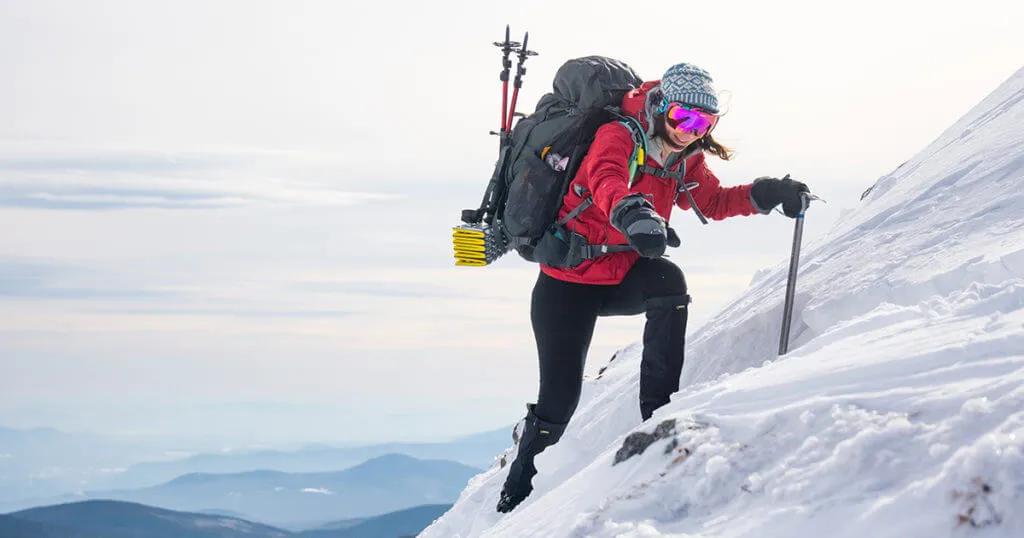
Essential winter hiking safety gear
Scenario 4: The Equipment Failure
Location: Rocky Mountain National Park, Colorado | Season: December
During a winter day hike, a participant's rain jacket zipper failed during a sudden snowstorm. Without effective wind protection, she rapidly developed hypothermia symptoms despite wearing adequate insulation layers underneath. The failed zipper created a critical vulnerability in her layering system.
Key Lesson: Equipment failure can instantly compromise hypothermia protection. Always carry backup gear and repair materials. Regular gear maintenance prevents critical failures at dangerous moments.
Outcome: Emergency repairs using duct tape and safety pins restored weather protection. Additional insulation layers compensated for compromised outer shell effectiveness.
These experiences have fundamentally shaped my approach to hypothermia prevention and response. Each scenario reinforced the importance of redundant safety systems, constant environmental awareness, and the critical value of early intervention. The progression from comfortable conditions to potential emergencies can happen remarkably quickly, emphasizing why preparation and vigilance are non-negotiable aspects of wilderness travel.
Training scenarios help prepare for real emergencies. I regularly practice hypothermia recognition and treatment techniques with hiking partners, using role-playing exercises to build response skills. These practice sessions have proven invaluable during actual emergencies, creating muscle memory and confidence when immediate action is required. Understanding various outdoor risks including hypothermia symptoms hiking recognition improves overall wilderness safety competency.
Documentation and post-incident analysis help prevent future occurrences. After each hypothermia incident, I conduct detailed reviews examining contributing factors, response effectiveness, and lessons learned. This systematic approach has identified patterns and improved my prevention strategies over the years. Sharing these experiences with other outdoor educators and guides helps build collective knowledge that benefits the entire hiking community.
Conclusion
Understanding and preventing hypothermia symptoms hiking emergencies represents a fundamental responsibility for every outdoor enthusiast. Through two decades of wilderness experience, formal medical training, and unfortunately, several real-world emergency responses, I've learned that hypothermia prevention requires comprehensive preparation, constant vigilance, and decisive action when warning signs appear.
Key Takeaways for Safer Hiking
- Prevention is paramount: Proper gear, nutrition, and planning prevent most hypothermia emergencies
- Early recognition saves lives: The "umbles" provide an easy memory tool for symptom identification
- Environmental awareness: Conditions can change rapidly; constant monitoring is essential
- Immediate action required: Hypothermia progression can be rapid and life-threatening
- Team communication: Everyone must feel comfortable reporting discomfort or concerns
- Emergency preparedness: Carrying proper gear and knowing treatment protocols is non-negotiable
The wilderness teaches harsh lessons about human vulnerability to environmental conditions. Hypothermia symptoms hiking situations can develop in seemingly mild conditions, catching even experienced hikers off guard. My experiences have reinforced that respect for nature's power, combined with proper preparation and training, provides the best defense against cold weather emergencies.
Continuous learning and skill development remain essential for wilderness safety. I regularly update my wilderness first aid certifications, test new gear in controlled conditions, and share experiences with other outdoor professionals. The hiking community benefits when we openly discuss challenges and near-misses, building collective knowledge that keeps everyone safer on the trails.
Technology can enhance safety, but it should never replace fundamental skills and awareness. Weather apps, GPS devices, and emergency communication tools provide valuable support, but understanding how to read environmental conditions, maintain core body temperature, and respond to medical emergencies remains the foundation of wilderness competency.
Remember that hypothermia prevention extends beyond individual safety – it's about protecting your entire hiking group and reducing the burden on search and rescue organizations. Every prevented emergency represents lives saved, families spared tragedy, and resources available for other emergencies. Taking hypothermia seriously demonstrates respect for the wilderness and responsibility toward fellow adventurers.
As you plan your next hiking adventure, incorporate the lessons and strategies outlined in this guide. Pack appropriate gear, understand recognition signs, practice treatment techniques, and maintain constant environmental awareness. The mountains offer incredible experiences and personal growth opportunities, but they demand respect and preparation in return. Stay safe, hike responsibly, and help others do the same.
"The wilderness holds answers to questions we have yet to learn how to ask." – Nancy Wynne
Stay informed, stay prepared, and never stop learning. Your safety and that of your hiking companions depends on the knowledge and skills you develop before you need them.

